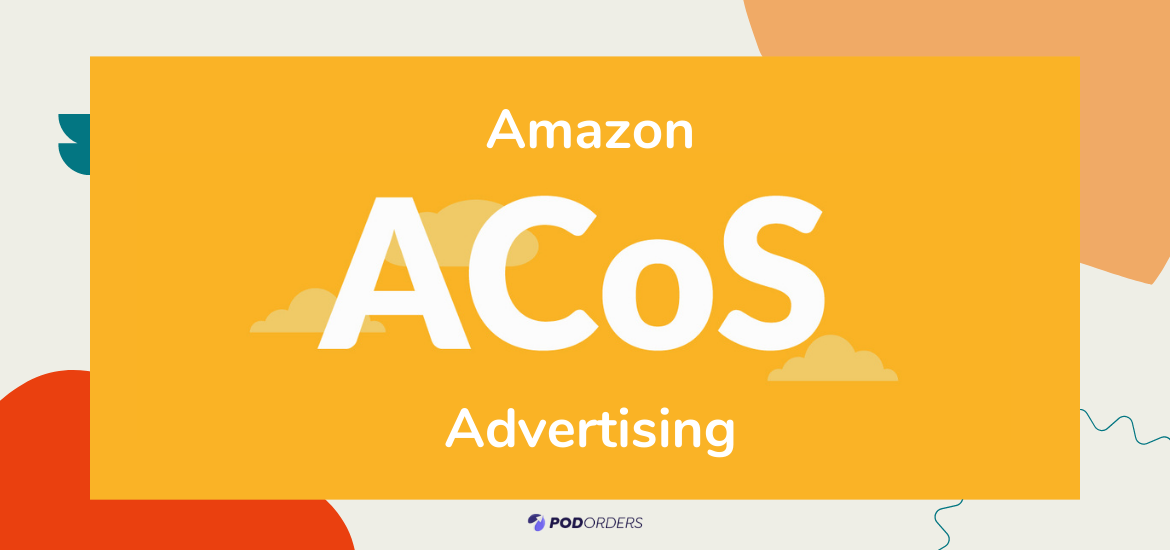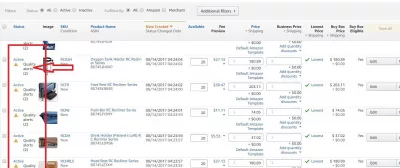As Amazon continues to grow and expand its marketplace business, there are certain costs associated with trading on this platform. If you’re selling on Amazon, you may have heard of the term Amazon ACoS Advertising. In recent years, it has become popular since many sellers want to save their advertising spend while still maintaining brand visibility in search results.
So, what exactly is Amazon ACoS advertising? How does it work? And how can you reduce it? In this article, we’ll answer all these questions and more, so keep reading!
1. What is Amazon ACoS advertising?
ACoS stands for ad cost of sale. The cost of sale is defined as revenue minus total operating expenses, including product costs, shipping costs, customer service costs, etc. This metric can be helpful for sellers because knowing their ACoS helps them understand if they are selling items at a profit or not.
Therefore, lowering your Amazon ACoS can mean more profit potential for you as a seller. There are multiple strategies that sellers can implement to lower their Amazon ACoS advertising over time. However, one of these methods will need to be adopted first. That strategy would be increasing gross profit margin (which means lowering your product cost).
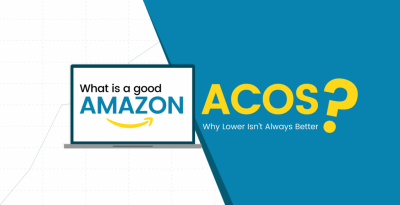
2. How to calculate Amazon ACoS Advertising?
Simply speaking, it measures advertising spend as a percentage of your overall revenue. There are two methods in which they calculate ACoS: CPA (cost per acquisition) and ROAS (return on ad spend). For example, if your business spends $2,000 on Amazon PPC ads (which often includes website product listing ads) and generates $4,000 in sales over a period of time (usually 30 days), your Amazon ACoS = ($2,000 / $4,000) = 50%.
That means you spent $1 for every $2 in revenue generated by ad spending. When calculating the Amazon ACOS advertising rate, it’s essential to also take into account other expenses like shipping. Shipping costs incurred will directly affect the net profit margin, which ultimately determines the ROI of an Amazon campaign.
3. What is a good ACoS? Benchmarks across industries
A good ACoS will vary by industry, but for most businesses, an ideal ACoS would be somewhere between 25-35%. That means that for every $100 you spend on advertising, you are making over $200. While there are businesses that can break even or even turn a profit with an ACoS over 35%, if your goal is growth, you want your ACoS to be as low as possible.
If you are spending less money on ads but have increased sales, then your profits are greater. If you have decreased sales but still have high ad costs, your profits aren’t really increasing. They’re just getting smaller at a slower rate than before.
Here are the benchmarks across several industries regarding Amazon ACoS advertising:
| Industry | Percentage |
| Video games | 8.2% |
| Automotive | 14.8% |
| Toys & Games | 18.6% |
| Tools & Home improvement | 19.3% |
| Appliances | 19.7% |
| Electronics | 19.8% |
| Sports & Outdoor | 20.7% |
| Home & Kitchen | 21.2% |
| Office supplies | 21.7% |
| Handmade Products | 22.3% |
| Clothing, shoes and accessories | 23.5% |
| Baby products | 27.3% |
| Pet supplies | 28.2% |
| Beauty and personal care | 29% |
| Health & Household | 35.2% |
| Cell phone & accessories | 36.8% |
Source: Sellics Internal Study
4. Best ways to reduce Amazon ACoS advertising
Let’s discover some of the best tactics to diminish Amazon ACoS advertising now!
4.1 Prioritize your best SKUs
Too many sellers think of all their SKUs as equally important. While most of them do indeed matter, there are likely some that will account for a higher percentage of your sales or profits than others. Prioritize these top SKUs and then find ways to make sure you’re getting more sales for them. They’ll be worth it in terms of what they contribute to your bottom line.
Reducing ACOS on these products can be a good way to start. Especially if there are significant opportunities (like sales) where you can lower your cost per click without sacrificing too much in terms of impressions or clicks overall.
4.2 Utilize automated Amazon PPC tools
Amazon’s proprietary ad platform has made huge improvements over time. But it can still be difficult for brands to take advantage of certain features. For example, Amazon campaigns only allow you one bid adjustment (a modifier that tells Amazon’s algorithm whether you want to pay more or less for a click). If your bid adjustment increases click by 20%, then you’re out of luck. That feature doesn’t exist.
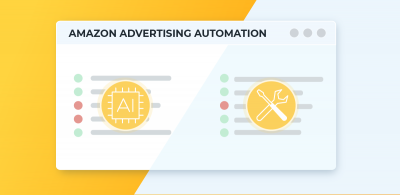
Fortunately, third-party tools such as Optmyzr and AMZAlerts offer automated bid adjustments among other features, to help brands advertise on Amazon effectively. These tools can even play an important role in reducing ACOS advertising if used correctly.
4.3 Improve your bidding strategy
You can directly control your Amazon ACoS advertising through your bidding strategy: Reduce bids on poor-performing keywords – Double down on high-performing ones. Your bid (or cost per click) affects your delivery costs because your bid determines where your ad appears in search results.
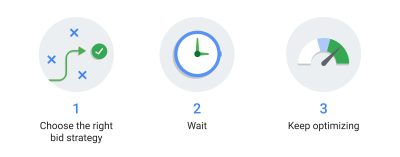
If you have a significant amount of traffic coming from competitors, consider raising your bids, so you maintain a higher position on relevant queries. Making sure you only bid on high volume, low competition keywords with low CPCs will help prevent high costs per sale. Once you have an idea of what that price should be, try experimenting with different budgets until you get close.
4.4 Pause keywords than overspend ad budget
The next thing you should do to reduce Amazon ACoS advertising is seeing which keywords are spending too much. Again, if you have a good PPC account, it should be pretty easy to set up a report, where you can see your top 20 spenders or whatever threshold makes sense for your business.

Then, simply pause (or stop) these keywords until you get back under budget. Pro tip: Make sure that when keywords aren’t running in your campaign, they aren’t showing up in any ad groups. This way, when you go back into positive territory in terms of the total spent versus total ROI earned, Google AdWords will automatically bid more aggressively on them again.
4.5 Analyze the effectiveness of current keywords
Keywords are vital for generating sales, but if they aren’t converting, you need to rethink them.
- Are these keywords actually being clicked by potential customers?
- Are these keywords bringing people to your products or pages, or are they sending them elsewhere?

If not, improve! Google Analytics can help you determine which keywords are worth more investment. Specifically, look at Conversions on both Acquisition and Behavior. For example, if conversions from ads were high but click-throughs weren’t effective, then it would be worth analyzing why these customers weren’t buying. And whether you should remove those keywords from your ad campaigns altogether.
4.6 Do effective competitor research
Once you find your competitor’s products that are performing well on Amazon, go through their reviews. For each of their best-selling products, there are likely dozens of reviews. Also, take note of what customers say about shipping, customer service, returns policy, etc.
- Do they have an FBA or merchant fulfilled offering?
- If so do they mention anything about shipping time or cost in their product descriptions or customer reviews?
- Do they seem professional in their business practices?
- Are they trustworthy?

Make notes for all relevant information regarding your competitors you can possibly gather from reviews. That will help you understand your competition better. It also gives you ideas for things that could differentiate your business model later on.
Moreover, use tools like SEMrush, SpyFu, Google AdWords keyword planner, Keyword Tool Dominator, etc. These can help you uncover new keywords that your competitors might be using but that aren’t yet a part of your paid search campaigns. See which keywords seem likely to convert into customers who will buy products from you rather than someone else selling similar products at similar prices.
4.7 Implement negative keywords
The next tip to decrease Amazon ACoS advertising is utilizing negative keywords. Setting up negative keywords not only can help your overall account health but also reduce your Amazon ACOS (cost-per-click) advertising. Negative keywords help identify keyword phrases that should not appear in any of your ads. They will make sure you don’t spend any money on clicks that aren’t qualified for your product or simply aren’t relevant.
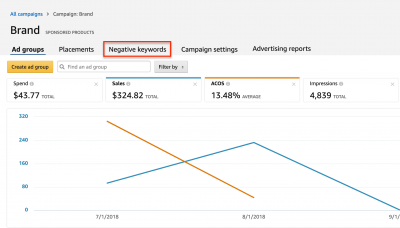
For example, if you sell baby clothes and happen to sell a lot of clothes for adult men, create negative keywords such as men’s clothes. This type of word trickery will ensure you spend no money on clicks that don’t convert. So set up some negative keywords today!
4.8 Optimize listing titles
Your listing title represents about 40% of your product’s conversion rate, so make sure your title includes keywords that you want to rank for. The more accurate and appealing your title, the more likely people will click on your ad.

Moreover, optimize listing bullet points. Bullets help give customers an overview of what each product has to offer. It’s helpful to mention features like size, color, and condition in detail so they can find exactly what they’re looking for. Test different bullet point variations on different listings until you see one that works well with customers. Keep in mind that sometimes shorter or longer bullets perform better based on length or keyword density requirements.
4.9 Adjust top of first-page placement modifiers
When Amazon split first page placement (FPP) modifiers into two tiers, some merchants feared their ads might see an immediate drop in performance. That didn’t happen. But if you’re still concerned, one option for reducing your Amazon advertising costs on high-bid product searches is lowering your FPP modifier levels.
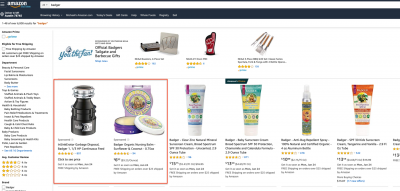
This won’t actually lower your bids; it will change how Amazon calculates its first page bid modifiers (FDBMs). It takes a few steps to execute effectively, but you could save money with no significant reduction in ad performance if executed correctly.
4.10 Determine your profit margin on a product level
You can minimize Amazon ACOS advertising costs on your products by figuring out your profit margin. Add up all of your fixed costs, including any overhead, materials, or salary for each product you sell. For example, if a pencil costs you 50 cents to make and sells for $1 on Amazon, your profit margin would be 50 percent. This means every sale will put $0.50 in your pocket after all of your fixed costs are covered.
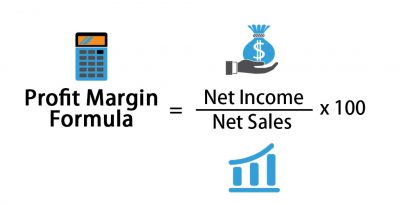
It’s a good idea to quickly calculate what percentage each product falls into on a cost-profit margin level before going any further. If some products have higher margins than others, you can start targeting those products first with advertising dollars later on once sales pick up.
For more information in terms of reducing Amazon ACoS advertising, click here.
5. Amazon ACoS Advertising FAQs
More information about Amazon ACoS advertising can be found in this part.
5.1 What Are Breakeven and target Amazon ACoS advertising?
Breakeven and Amazon target ACoS are two of many acronyms that merchants hear about daily but don’t fully understand. Breakeven represents a point where your total revenue from a specific product equals your total product cost. In other words, you cover all costs associated with marketing, manufacturing, warehousing, and shipping by generating at least as much revenue you pay out in costs.
Breakeven can vary depending on who you ask, but 1% or 2% is a good starting point for calculating breakeven rates for any given offer. The same goes for Amazon target ACoS. Think of it as a profit threshold that you have to reach before becoming profitable on anyone offer.
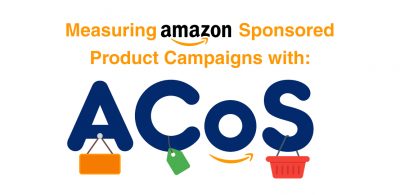
5.2 What is the difference between ACoS and TACoS?
The acronyms TACoS (traffic acquisition cost-per-click) and ACoS (advertising cost-per-click) are used interchangeably, which can be confusing. In short, ACoS refers to what you pay per click from a visitor who finds your website through an advertisement.
In contrast, TACoS represents what you pay per click from a visitor who finds your website by clicking on a Google search result related to your niche. Whether or not you consider one acronym better than another will depend on your circumstances as well as personal preference.
Also, TACoS and ACOS are inherently linked – one influences the other over time, but both can go up or down within a single timeframe.
Click on this link for more useful FAQs concerning Amazon ACoS advertising.
6. Wrapping Up
Amazon ACOS advertising has become increasingly important to Amazon sellers over the last few years. Since it’s a key metric to measure in order to stay competitive. Hopefully, after reading this blog, you can win the Buy Box even if your competitor’s price is lower by increasing your ACOS above theirs!
If you have any further questions, do not hesitate to let us know. We will respond in no time. And, happy selling!
Read more
